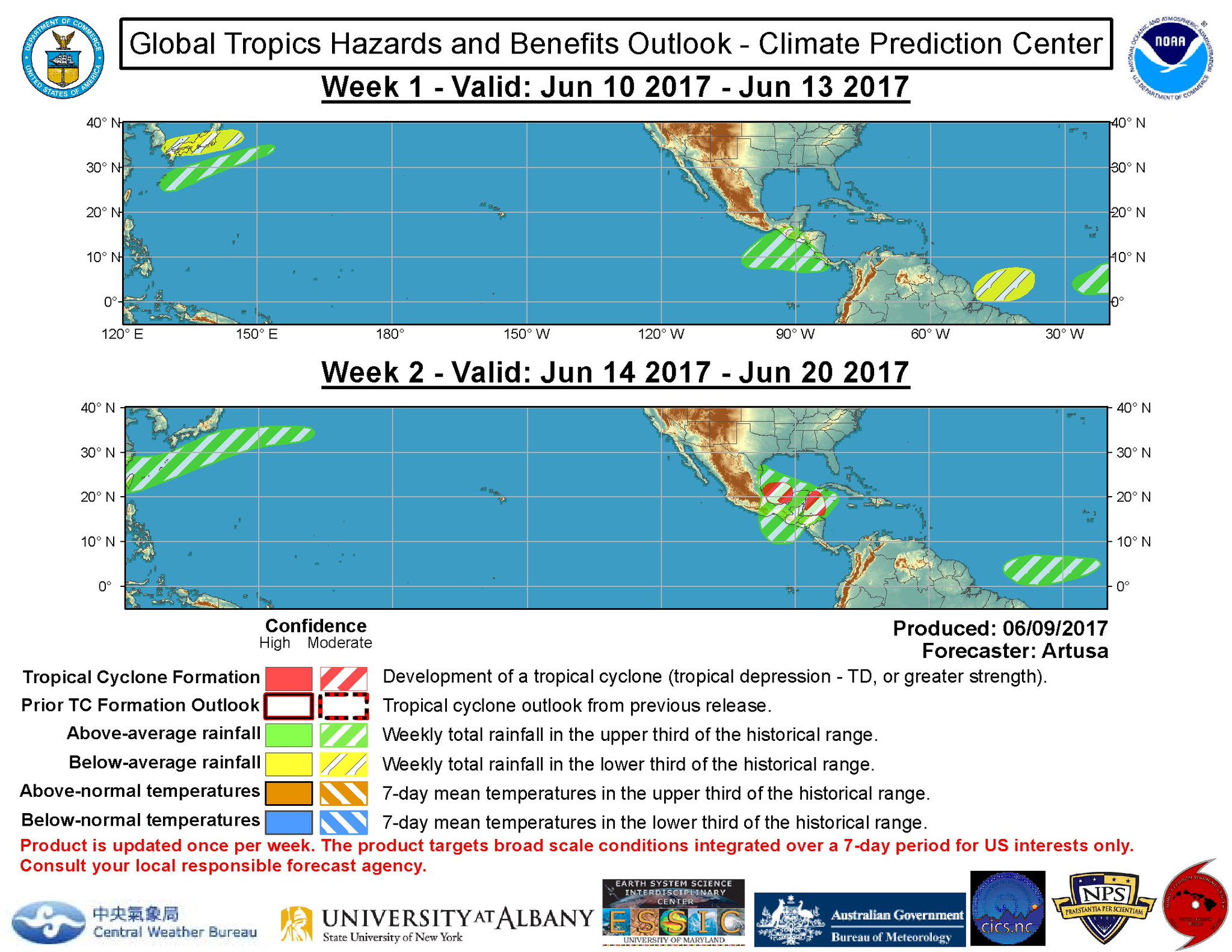It appears Saturday and Sunday will get its fair share of downpours, so this soggy mess may not be over.
The reason for the rain is a disturbance basically sitting as a line of clouds extending from Western Cuba, through South Florida, over the Bahamas, and into the Western Atlantic.
This line of clouds is like a magnet drawing in plenty of moisture from the Gulf and dumping it over us.
I am hoping this constant "Train of Rain" weakens a bit by Sunday to give us a break.
Long Range Outlook:
It may be wet for awhile. The National Weather Service Climate Prediction Center, is in charge of looking at long range trends and issuing a once a week weather outlook. It is based on broad scale conditions
They are looking at possible development of a tropical system either in the SW Gulf of Mexico or NW Caribbean Sea, between June 14-20th.
- On the graphic above, look at the map that says "Week 2". There are two areas highlighted with red and white stripes.
- The ECMWF, GFS, and Canadian model guidance indicate potential formation of a tropical system near those areas.
- NWSCPC tweeted Friday afternoon they were moderately confident such a feature would develop.
NWSCPCVerified account @NWSCPC
Moderate confidence of the second Atlantic tropical cyclone of the year forming between June 14-20 near the Yucatan
The reason why I am mentioning this, is that the areas indicated for possible formation, are areas where most systems develop during the month of June. The typical tracks taken by these system are into Mexico, the Gulf States and even Florida.
We surely don't need anymore. I will keep updating you on this possible formation in the tropics.
All we can do is watch & wait and see what finally happens.


Both the analog and digital meters nowadays are available with high-tech features and operational supremacy to ensure accurate and efficient measurement of liquid flow and amount. Manufacturers of meters are more aware than before about the higher level of precision and performance, which are the major concerns of the customers.
ReplyDeleteTo achieve precise measurements of fluids, the meters are placed near to the feed lines and the calculated results are displayed accurately on the meter boards. The common unit that is used to read water meters is 'cubic feet' or 'inches', but the units vary according to the specifications of the device. The readings or results are displayed in straight or circular registers, and each register include a numeric pattern that calculate the total water usage with convenience.